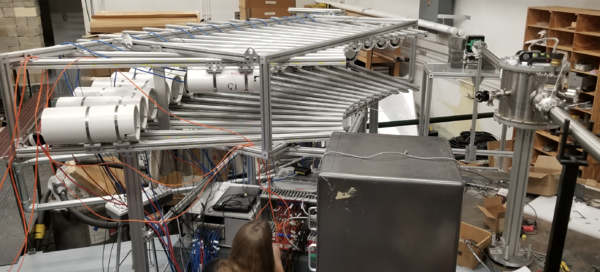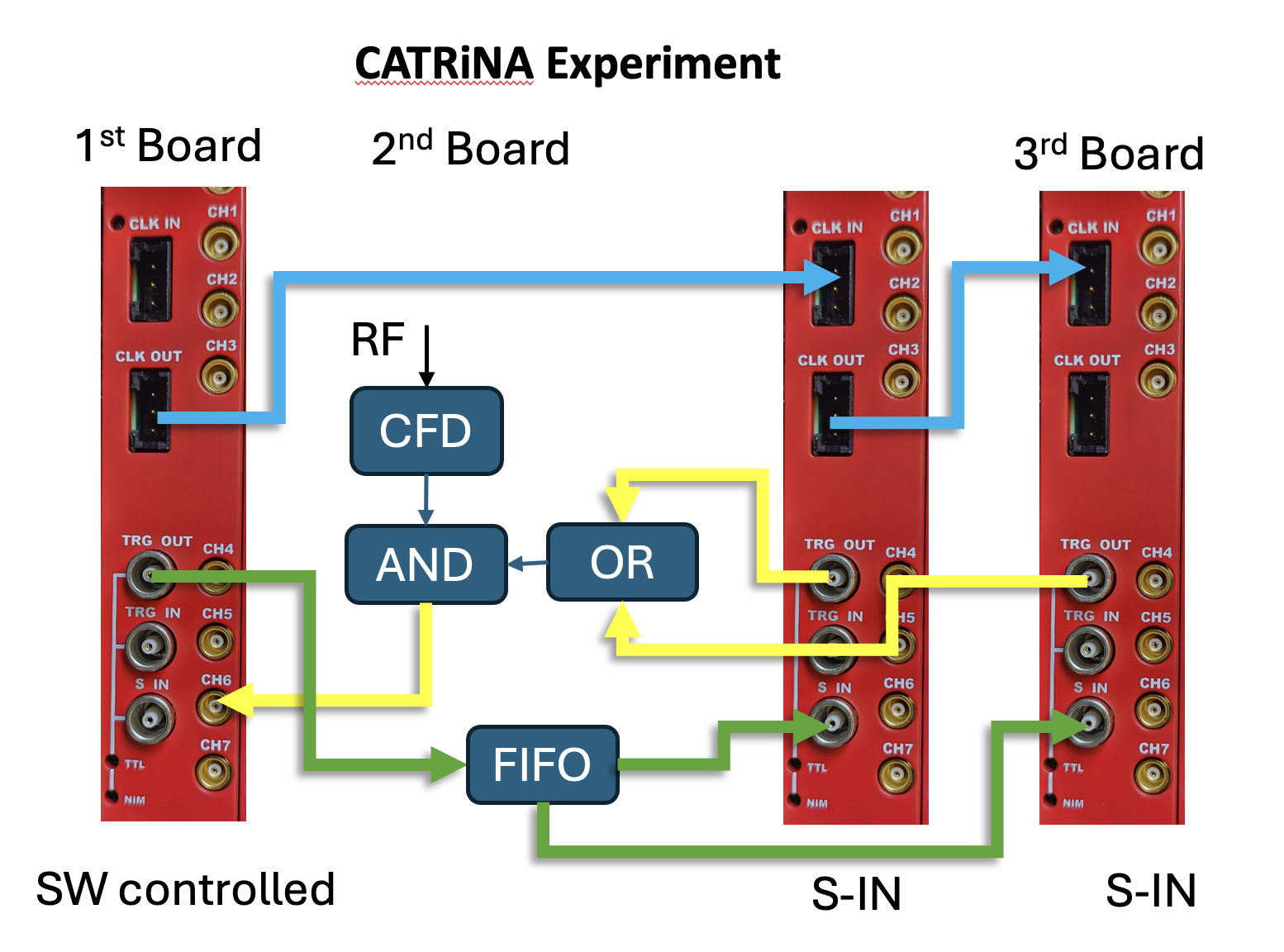CATRiNA
Introduction
The Compound Array for Transfer Reactions in Nuclear Astrophysics (CATRiNA) [1] is neutron detector array located at Florida State University. CATRiNA is composed of 32 deuterated-benzene () liquid scintillators. The array consists of 16 "small" detectors which has 2" x 2" aluminum cell each and 16 "large" detectors that has a 4" x 2" aluminum cell each. Due to the special characteristic of the light-output of the deuterated material with the neutrons, the light-output can be converted to the neutron energy without time-of-flight information [2].
= Digitizer setup for coincident with RF
Config
Digitizer 1 is the master, and received the RF-coin signal. Digitizer 2 and 3 are the slaves, connected to the neutron detectors
The TRG-OUT of digi-2 and -3 will be "on" when ever any channel is fired. To do so, the Local Shaped Trigs [G] must be OR.
The digitizer 2
Contact
Sergio Almaraz-Calderon mailto:salmarazcalderon@fsu.edu
References
- ↑ J. F. Perello et al. NIMA 930, 196 (2019) https://doi.org/10.1016/j.nima.2019.03.084
- ↑ A. B. Morelock et al. NIMA 1034, 166759 (2022) https://doi.org/10.1016/j.nima.2022.166759



